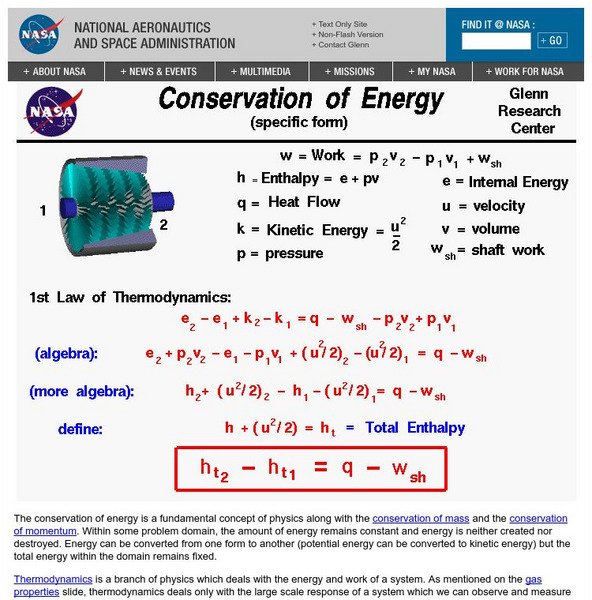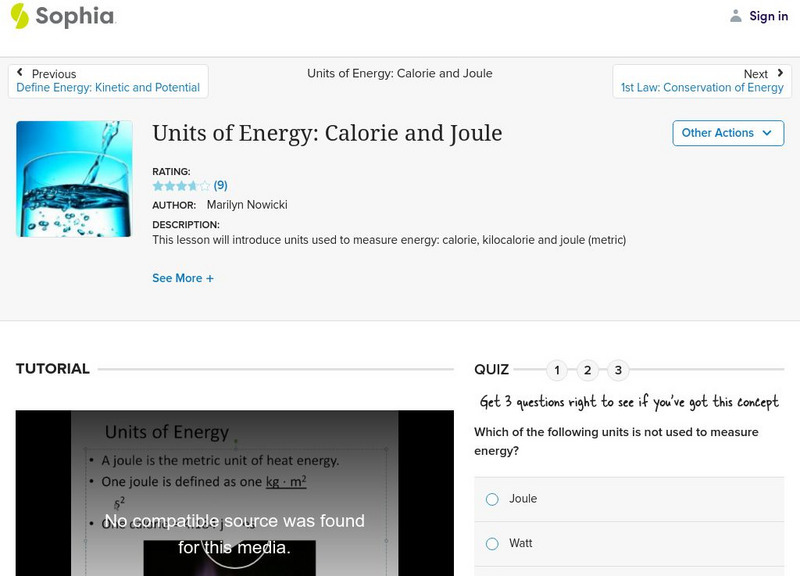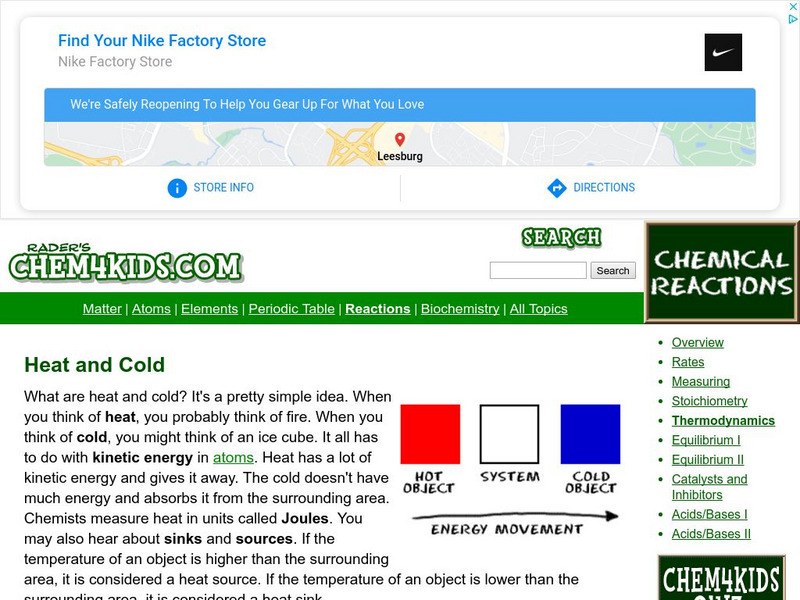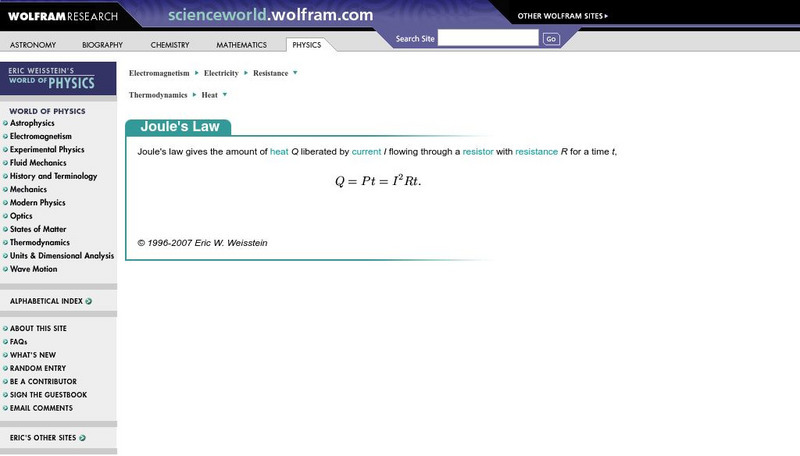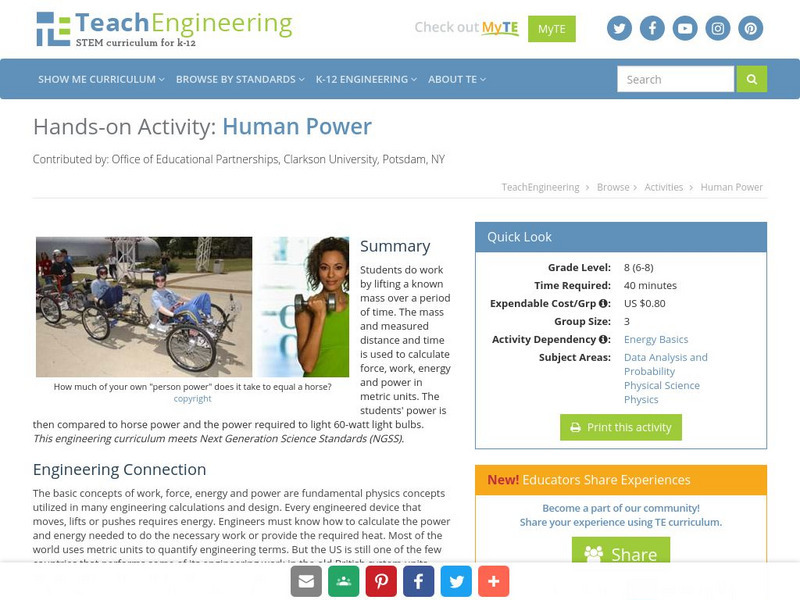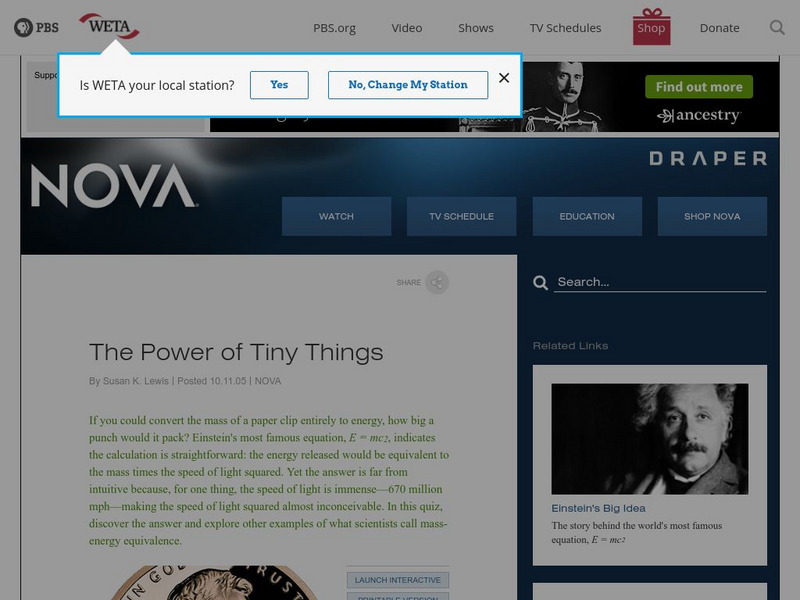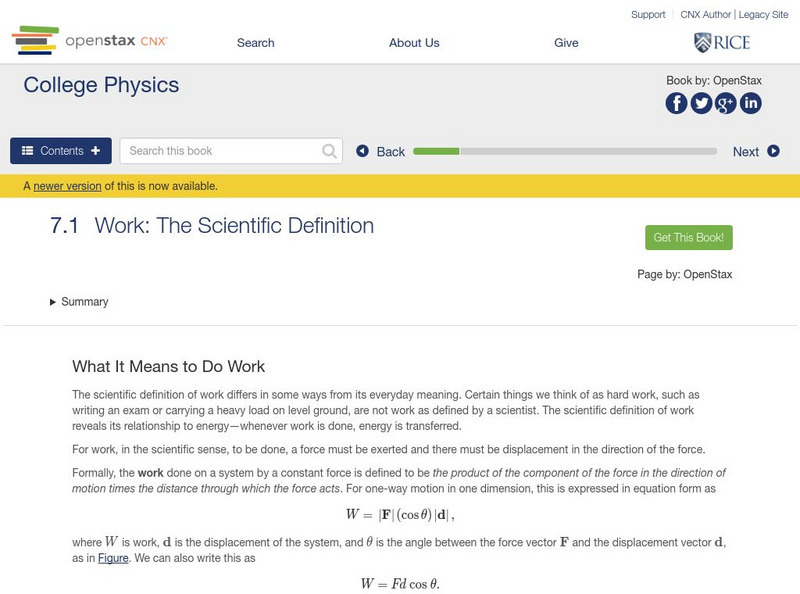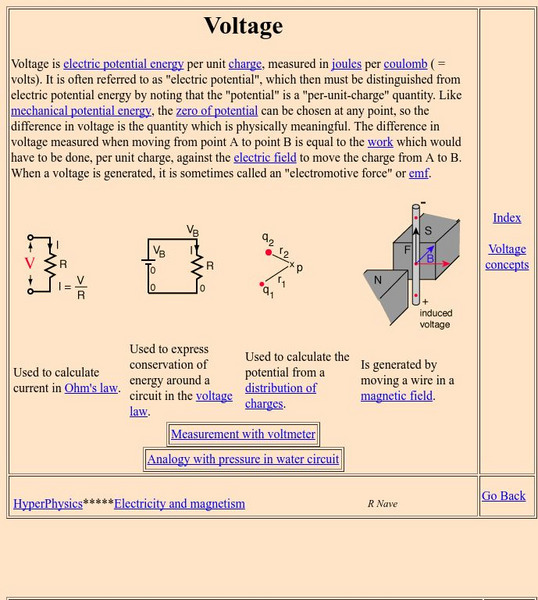Physics Classroom
The Physics Classroom: Kinetic Energy
Kinetic energy is defined and explained--learning exercises are included to assess your understanding.
NASA
Glenn Research Center: Conservation of Energy
From the Glenn Research Center at NASA, read about the law of conservation of energy. Included are formulas and many links to key terms.
Sophia Learning
Sophia: Units of Energy: Calorie and Joule
A narrated screencast which discusses various units used to measure energy: calorie, kilocalorie, and joule. [2:22]
Science Education Resource Center at Carleton College
Serc: Bot Ec: Energy Released in an Earthquake
A magnitude 8.5 earthquake (such as the 1964 Good Friday earthquake in Alaska) releases about 1x1018 joules of energy. The atomic bomb exploded over Hiroshima released about 1.5x1013 joules of energy. How many Hiroshima bombs would one...
Science4Fun
Science4 Fun: Energy
What is energy? Article provides a brief discussion of the many different forms of energy.
Chem4kids
Chem4 Kids: Thermochemistry
This site provides a general overview of thermochemistry, the division of chemistry that deals with temperature in chemical reactions. Content explores what heat and cold really are, the heat and energy around you, and a bit about Lord...
National High Magnetic Field Laboratory
Magnet Academy: James Joule
James Prescott Joule experimented with engines, electricity and heat throughout his life. Joule's findings resulted in his development of the mechanical theory of heat and Joule's law, which quantitatively describes the rate at which...
Ducksters
Ducksters: Physics for Kids: Energy
Kids learn about the science behind Energy including its different forms such as chemical, electrical, heat, and gravitational. When is energy considered renewable or nonrenewable?
Wikimedia
Wikipedia: James Prescott Joule
Wikipedia offers a biographical sketch of James Prescott Joule discusses his contributions to the world of science, including the conservation of energy.
Wolfram Research
Wolfram Science World: Joule's Law
This site briefly defines Joule's Law. A formula is provided and links to related terms.
Ducksters
Ducksters: Physics for Kids: Kinetic Energy
Kids learn about kinetic energy in the science of physics. The energy of motion can be calculated using mass and velocity. The standard unit is the joule. How it is different from potential energy.
Ducksters
Ducksters: Physics for Kids: Potential Energy
Kids learn about potential energy in the science of physics. The energy of position and state can be calculated using mass, gravity, and height. The standard unit is the joule. How it is different from kinetic energy.
Victorian Web
Victorian Web: Conservation of Energy and Thermodynamics
This site is about the trace of the evolution of historical ideas concerning energy conservation and the laws of thermodynamics.
TeachEngineering
Teach Engineering: Human Power
Students do work by lifting a known mass over a period of time. The mass and measured distance and time is used to calculate force, work, energy and power in metric units. The students' power is then compared to horse power and the power...
Physics Aviary
Physics Aviary: Mechanical Equivalent of Heat Lab
This lab is designed to have students look at a greatly simplified version of James Joule's experiment showing the conversion of mechanical energy to heat.
PBS
Pbs Nova: The Power of Tiny Things
Have you ever wondered what would happen if you converted the mass of a paper clip into an amount of energy? In this informative quiz, discover the answer, and explore other examples of mass-energy equivalence.
Science and Mathematics Initiative for Learning Enhancement (SMILE)
Smile: Electron Current Flow
A teacher lesson plan which could be easily converted into an idea for a student project or presentation. This page describes an activity in which the water-electricity analogy is used to investigate the relationship between current,...
University of California
University of California Los Angeles: Force, Work and Power
Describes the definition and relationships between force, work and power. Includes nice drawings to increase conceptual understanding.
TeachEngineering
Teach Engineering: Power, Work and the Waterwheel
Waterwheels are devices that generate power and do work. Students construct a waterwheel using two-liter bottles, dowel rods and index cards, and calculate the power created and work done by them.
Khan Academy
Khan Academy: Heat and Temperature
An explanation of using heat capacity to calculate heat.
TED Talks
Ted: Ted Ed: How Does Work, Work?
In this video, Peter Bohacek explains the interplay between work and power and how it can be seen in the functioning of a clock. [4:31] Followed by a short quiz and a list of additional resources to explore.
OpenStax
Open Stax: Work: The Scientific Definition
In the following interactive students will begin to explain how an object must be displaced for a force on it to do work. They will also explain how relative directions of force and displacement determine whether the work done is...
Georgia State University
Georgia State University: Hyper Physics: Voltage
Electrical currents and voltage are defined and illustrated.



